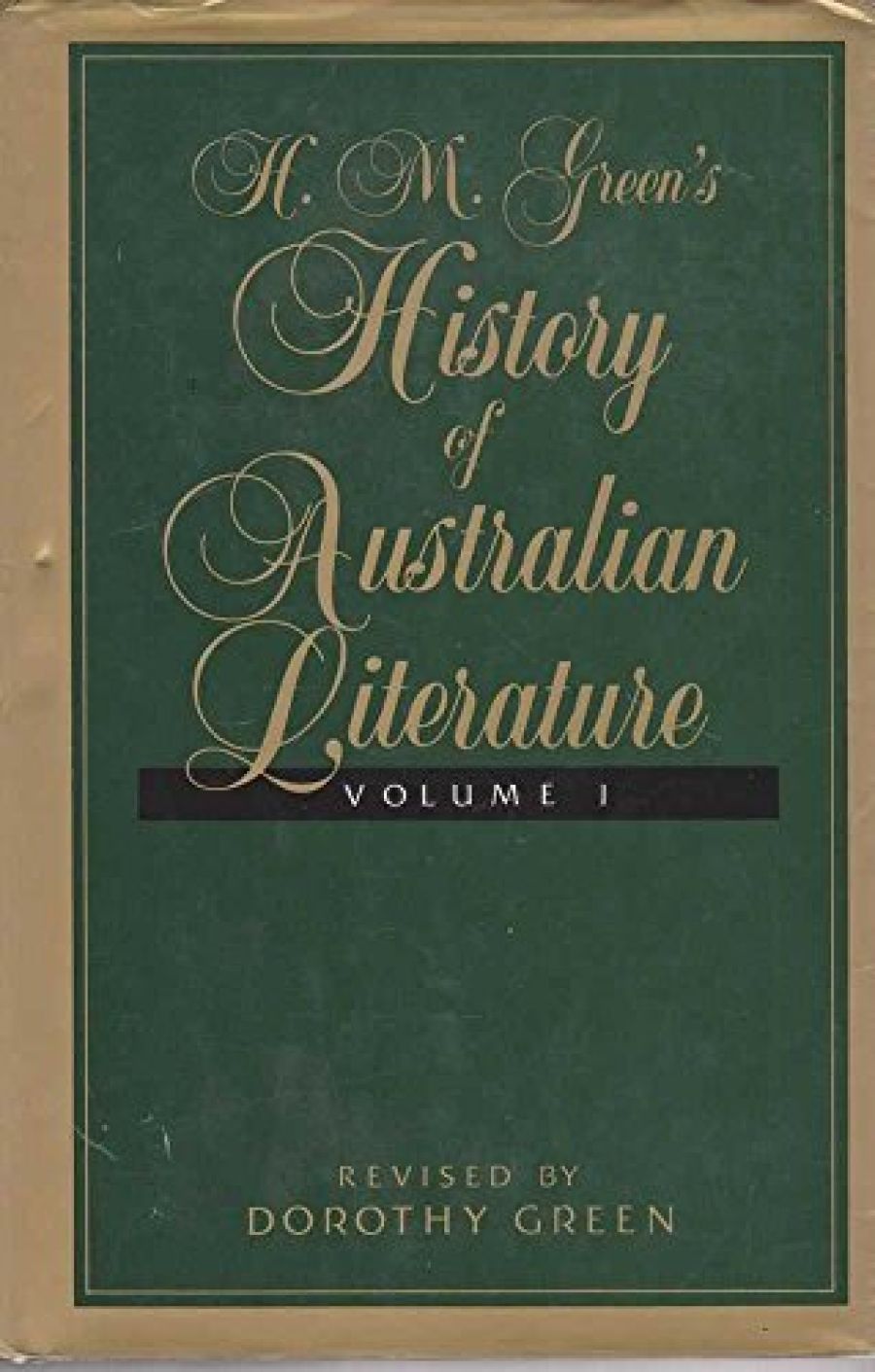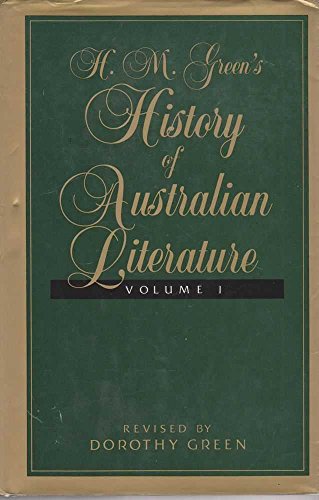
- Free Article: No
- Contents Category: Literary Studies
- Review Article: Yes
- Article Title: A classic renewed
- Online Only: No
- Custom Highlight Text:
A classic, a cynic might say, is a work which is much admired but seldom read. But the reappearance of H. M. Green’s A History of Australian Literature, long admired but also long out of print, is likely to change that definition. To read this work again is to realise just how good it is, how apposite to many of our current concerns. Its title suggests why this is so, A History of Australian Literature, Pure and Applied. This is a history which is systematic as well as serious, aware not only of the problematic nature of the terms "history”, “Australian” and “literature” but also of the interplay between texts and contexts and of the multiple nature of these contexts – geographical (in a sense Foucault would understand, concerned with space as a psychic as well as a physical fact), historical, ideological. But it is also written by someone who knows how to read literature, who is concerned to restore the integrity of language and is able to combine an appreciation of the precise and univocal with a sense of the fulness and complexity of the symbol. Green’s account of a writer is always judicious and perceptive and usually generous. More importantly he is always prepared to honour the terms which a writer sets for him or herself or has posed by the environment – his essay on Brennan, for example, is-still perhaps the most balanced written about that problematic writer.
- Book 1 Title: A History of Australian Literature
- Book 1 Biblio: Angus & Robertson, two volumes, index, 1544 pp.
- Book 1 Cover Small (400 x 600):

- Book 1 Cover (800 x 1200):

But it is also written by someone who knows how to read literature, who is concerned to restore the integrity of language and is able to combine an appreciation of the precise and univocal with a sense of the fulness and complexity of the symbol. Green’s account of a writer is always judicious and perceptive and usually generous. More importantly he is always prepared to honour the terms which a writer sets for him or herself or has posed by the environment – his essay on Brennan, for example, is-still perhaps the most balanced written about that problematic writer.
Dorothy Green’s additions are completely faithful to the spirit of the project, to create a “tradition”, a context for discussion and reading which would be active as well as passive, give primary loyalty to the present, not to the past and make the work of reading and writing part of politics – in its widest and proper sense.
A third volume dealing with literature since 1950 will be her own. It is something to look forward to.


Comments powered by CComment